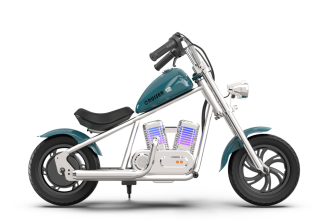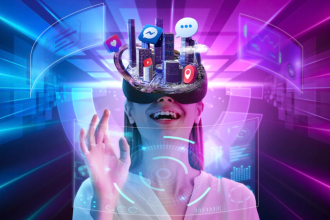In a world where workplace learning is becoming increasingly digital, the need for engaging, relevant, and personalized eLearning experiences is more critical than ever. Organizations across the globe are recognizing that traditional training methods are no longer enough to meet the evolving expectations of learners or the dynamic needs of businesses. This is where ei design steps in, reshaping how learning solutions are conceived, designed, and delivered.
- What Makes EI Design Different?
- A Human-Centered Approach to Learning
- The Power of Learning Experience Design (LxD)
- Personalization That Matters
- Microlearning That Builds Over Time
- Innovative Formats and Modalities
- Agile Design for Dynamic Business Needs
- Fostering a Culture of Continuous Learning
- Real-World Impact Through Learning Analytics
- Collaboration Is Key
- Bringing It All Together
What Makes EI Design Different?
At its core, EI Design’s philosophy is simple: learning should drive performance. But the way they bring this philosophy to life is what sets them apart. Rather than following a one-size-fits-all approach, EI Design blends creativity, learning science, and technology to deliver experiences that are purposeful and outcome-oriented.
They don’t just create courses. They craft learning journeys. These journeys are designed to help learners connect with content in meaningful ways, ultimately driving retention, application, and performance on the job.
A Human-Centered Approach to Learning
EI Design places the learner at the center of every decision. This means going beyond the traditional understanding of learner personas and diving deep into real-world challenges, job roles, and motivations.
By prioritizing empathy in the design process, the team ensures that each learning experience resonates on a personal level. This leads to greater engagement and better outcomes because the learning feels relevant and supportive rather than mandatory and detached.
The Power of Learning Experience Design (LxD)
One of the foundational elements of EI Design’s philosophy is Learning Experience Design (LxD). It’s not just about making learning look good; it’s about making learning work.
LxD involves:
- Understanding the context in which learning will be used
- Designing with intent and purpose
- Aligning learning goals with real performance needs
By integrating instructional design, user experience, and visual storytelling, EI Design ensures that each touchpoint in the learner journey contributes to deeper understanding and better on-the-job performance.
Personalization That Matters
Not all learners are the same, and EI Design embraces this fully. Their solutions include thoughtful personalization strategies that allow content to adapt to learners’ roles, proficiency levels, and learning preferences.
This can be as simple as branching scenarios that shift based on a learner’s response or as advanced as AI-driven learning paths that evolve with user input. The result? Learners feel seen and supported, making them more likely to engage with and retain what they’re learning.
Microlearning That Builds Over Time
In today’s fast-paced work environments, employees often can’t afford to step away for hours-long training sessions. EI Design uses microlearning to deliver targeted, bite-sized modules that are easy to access and consume.
But it’s not just about keeping things short. These microlearning units are part of a bigger ecosystem. When designed strategically, they build on each other to create cumulative learning over time. This approach helps embed knowledge more effectively without overwhelming learners.
Innovative Formats and Modalities
EI Design doesn’t limit themselves to conventional eLearning formats. They incorporate:
- Gamification to make learning interactive and fun
- Scenario-based learning to enhance decision-making skills
- Video-based modules for quick learning and reinforcement
- Interactive PDFs and infographics for on-demand reference
- Mobile-first design to support learning anytime, anywhere
Each format is carefully chosen based on the learning objective and the learner’s context. The goal is always to create something that is easy to access, engaging to experience, and effective in application.
Agile Design for Dynamic Business Needs
In the corporate world, priorities shift quickly. Training needs to keep up. EI Design uses agile design principles to stay responsive. This means working in short, iterative cycles that allow for frequent feedback and adjustments.
This agility ensures that training stays aligned with business goals, no matter how fast things change. It also means stakeholders remain actively involved throughout the design process, leading to more accurate and impactful outcomes.
Fostering a Culture of Continuous Learning
EI Design doesn’t view learning as a one-time event. Their philosophy supports a culture of continuous learning, where employees have access to knowledge and skill-building resources when and where they need them.
This often involves building learning ecosystems that include:
- Performance support tools
- Just-in-time learning modules
- Learning nudges and reinforcement strategies
- Communities of practice
These ecosystems help keep learning alive long after the formal training is complete.
Real-World Impact Through Learning Analytics
What good is training if you can’t measure its impact? EI Design incorporates learning analytics to track engagement, progress, and performance outcomes.
This data-driven approach helps organizations:
- Understand what’s working and what isn’t
- Make informed decisions about future training
- Tie learning outcomes to business goals
According to a McKinsey report on building capabilities for performance, organizations that use data to inform their learning strategies see significantly better outcomes in employee performance and retention. By closing the loop between learning design and performance measurement, EI Design ensures that training investments lead to real-world results..
Collaboration Is Key
One of the less visible but most powerful aspects of EI Design’s philosophy is its collaborative spirit. They work closely with clients, subject matter experts, and stakeholders to co-create solutions.
This collaboration ensures that the final product is not only instructionally sound but also aligned with organizational culture, goals, and values. The result is training that learners relate to and businesses benefit from.
Bringing It All Together
The EI Design philosophy is about more than just building digital courses. It’s about creating meaningful learning experiences that empower employees and elevate business performance. From strategy and design to delivery and analytics, every step is guided by a commitment to empathy, innovation, and impact.
In a landscape where learning is often seen as a checkbox activity, EI Design brings purpose back into focus. They remind us that when done thoughtfully, learning can be a powerful driver of change, growth, and success.
If you’re rethinking your corporate training approach, it might be time to embrace a philosophy that puts people first and outcomes at the center. The EI Design way isn’t just a methodology—it’s a mindset.















